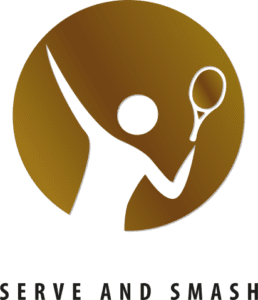This post may contain affiliate links.
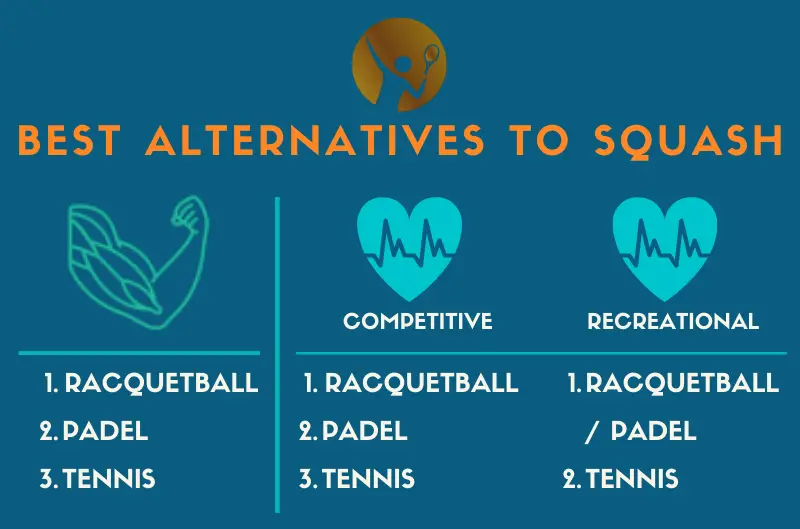
Squash is a great sport and even burns the most calories compared to other racket sports . Whatever your reason might be, if you are looking for the best alternative sports to squash, you will find them here! I have even ranked these alternatives based on several factors.
. Whatever your reason might be, if you are looking for the best alternative sports to squash, you will find them here! I have even ranked these alternatives based on several factors.
Padel, racquetball, and tennis are the best alternatives to squash based on the comparability of the muscles involved and intensity (measured as the amount of kcal burned). Next to that, soccer/football and volleyball are alternative sports that can be played on a squash court.
The remainder of this article focuses on the determining factors and the process of ranking the alternatives based upon these factors. There are even some alternative sports considered of which you might have never heard of. So why not read on and explore the alternatives with me?
Best alternatives to squash : determining factors
What constitutes an alternative as the best, seems like a philosophical discussion. This goes obviously beyond the scope of this article, let alone my area of expertise. Then, how to determine if it is a good alternative? I would argue that comparability is the key here. More specifically, in order to judge the alternative based on the comparability of the muscles involved and intensity (measured as the amount of kcal burned). Squash is predominantly an indoor sport however there are outside courts. In this case, we don’t have to limit ourselves to only indoor sports. On top of that, squash can be played year-round, which is considered as well.
Note that I deliberately excluded Squash57, formerly known as Racketball. The reason is that squash and Squash57 are so much alike that there is no reason in pointing out the differences when comparing to the different determining factors.
Looking for anything specific? Navigate directly to :
The best alternatives in terms of the involved muscle groups
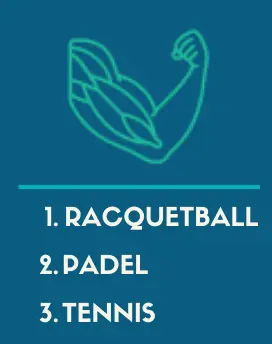
If we focus on alternatives for squash based on the similar muscle groups that are involved, you would start with other racket sports. To kick start your view on the best alternatives, I’ve listed the top 3 in terms of involved muscle groups below :
Top 3
So what’s next you might think? Well, let’s look at the alternatives in more detail and discuss to what extent they are suitable alternatives to squash.
Racquetball is played on the same or a similar court as squash, dependent on the national standards. Besides, it can be played both indoors and outdoor. The ball used in racquetball is bigger and bouncier. Therefore, even though the court is roughly the same, the players have slightly more time to react due to the type of ball. Nevertheless, racquetball seems to be the sport that comes closest to mimicking the physiological movements used in squash. Therefore, when looking at the muscles involved, racquetball is the best alternative for squash.
Padel, while for some this sport is new, others enjoy playing it for many years already. The padel court is a mix of a tennis and squash court and there are both indoor and outdoor courts. The ball is similar to a tennis ball and is bouncier than a squash ball. As a result, you need to react quicker in squash, compared to padel. Besides, padel is usually played as a doubles game, meaning there are four players on the court. This aspect results in less movement and less focus on agility, compared to squash. Again, these differences are rather subtle, making padel still a good alternative to squash.
Tennis is arguably the most well-known racket sport in the world. With tennis, you have several options, since you can play singles or doubles matches and it can be played both indoor and outdoor. As with squash, you are running around the court and swinging your arms. The main difference in tennis compared to squash is the fact that in squash you need to react faster. In tennis, you need to cover a greater distance but on the other hand, have more time to react and the ball is bouncer than in squash. Although by and large, the muscles involved are similar, you are activating slightly less the fast-twitch muscle fibers that enable you to quickly react.
Badminton, instead of playing with a ball, badminton is played with a shuttle. As a consequence, there is no bounce involved. nevertheless, you are running around to return the shuttle before it hits the ground. Badminton can be played both indoor and outdoor, noting that badminton played outdoor is mainly a recreational activity. Badminton can be played both as singles and doubles games. Overall, similar muscle groups are involved, but as we noticed with tennis and padel, there is no racket sport that matches the same fast-moving feature as in squash.
Table tennis is another racket sport where your reaction time is of great importance. Table tennis is played on a smaller court, with a smaller racket and a smaller ball. The game is played around the table, resulting in less distance to travel. Besides, the swing of your arm is reduced compared to squash and therefore I would argue that you are putting more focus on your core muscles. As with badminton, table tennis can be played both outside and indoors, whereas the former is recreational. Despite the fact that the ball in table tennis is lighter, both squash and table tennis players need to react quickly.
Pickleball is similar to tennis, but is played on a smaller court than tennis and can be played both indoor and outdoor, as either singles or doubles games. In pickleball, you have more time to react, while also covering less distance. This is especially the case during doubles games. This makes pickleball a lower pick compared to tennis for example when focused on the involved muscles.
Beach tennis is similar to regular tennis and can also be played as singles and doubles games. Since it is played on sand, moving around the court is harder compared to squash. Therefore the legs in general, but calves, hamstrings, and quads, in particular, need to work harder to travel the same distance. As with badminton, the ball needs to be played before it hits the ground.
360 ball is maybe the least known sport. It is played as a doubles game. All four players stand around a bowl-shaped circle. In terms of muscles involved, it is similar to pickleball I would argue. Let’s consider one other aspect 360 ball has in common with squash and to a lesser extent with the aforementioned sports. That is, in both sports it is common to see players jumping and diving across the court.
Alternative sports on a squash court
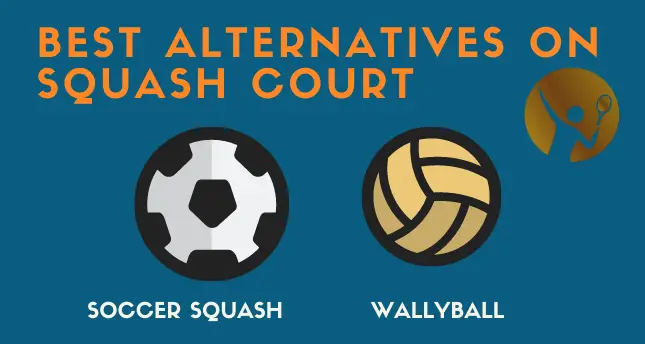
In case you are looking for an alternative sport that you can play on a squash court, then I have got you covered. In an attempt to increase the occupancy of the squash courts, many clubs looked at other sports that can be played on the court. This would attract other people to the court or result in existing visitors coming more often.
So if you want to switch it up with another sport, definitely check these ones out. The main sports that are available to play on a squash court are soccer/football and volleyball.
Volleyball on a squash court that also goes under the lesser-known term, wallyball, is easy to understand. It follows the same concepts as volleyball but the difficulty lies in the smaller field. As a consequence, it is harder to place the ball within the opposing half of the court. The number of players ranges generally between two and four players on each side, even though five or six is also allowed under some regulations.
Soccer squash is a combination of footvolley and squash. For the ones unfamiliar with footvolley, it is a combination of football/soccer and volleyball. Soccer squash is played on a regular squash court and the rules look a lot like squash. Some key differences are of course you play with your feet instead of a racket and you use a football and not a squash. Players need to shoot the ball above the tin and the ball cannot bounce twice else the rally is over. However, a player is allowed to kick the ball three times before returning it towards the front wall. But again, a player can’t let the ball bounce twice before shooting it back towards the front wall. A match is awarded based on the best of 3 or 5 games, where an individual game is awarded to the player scoring 11 points (with a 2 point difference). Of course, there are other rules to be considered, but if this sounds fun, give it a go and see if you like it.
The best alternatives in terms of the amount of burned kcal per hour
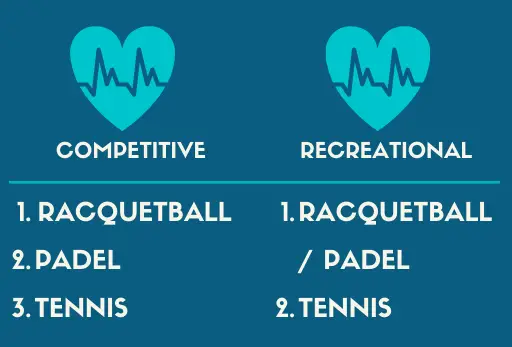
Before we cover the best alternatives to squash in terms of the number of calories burned, we first need to know the numbers for squash. Check out this article where I have demonstrated that squash burns the most kcal compared to other racket sports . Using this information it is worth comparing for an alternative to squash on a recreational as well as a competitive level, because of the difference in intensity.
. Using this information it is worth comparing for an alternative to squash on a recreational as well as a competitive level, because of the difference in intensity.
Competitive level
On a competitive level, squash burns most kcal, with 960 kcal per hour for an 80 kg / 176 lbs individual. Padel and racquetball come second with 800 kcal for the same individual. Both padel and racquetball make a good alternative for squash when played on a competitive level. Tennis (singles) on a competitive level would be the third-best alternative, burning 640 kcal. This assumes the same individual and the amount of kcal burned per hour. Check out the full overview of racket sports in terms of burned kcal per hour for a given bodyweight on a competitive level.
Recreational level
If we focus on racket sports on a recreational level, squash and tennis (singles) both burn the most calories per hour for any given body weight. For the same 80 kg / 176 lbs individual both tennis (singles) and squash burn 584 kcal. The second-best alternative to squash is racquetball. If you play racquetball on a recreational level for an hour and you weigh 80 kg / 176 lbs, you’ll burn 560 kcal. Your third alternative to squash on a recreational level would be to play padel. This will result in burning 480 kcal, all things equal.  Check out the full overview of racket sports in terms of burned kcal per hour for a given bodyweight on a recreational level.
Check out the full overview of racket sports in terms of burned kcal per hour for a given bodyweight on a recreational level.
| Level | Best alternatives |
|---|---|
| Competitive level | 1. Padel or Racquetball 3. Tennis (singles) |
| Recreational level | 1. Tennis (singles) 2. Racquetball 3. Padel |
If this spiked your interest and you want to max out your kcal burn rate, check out these sports that are in the top 10 .
.
